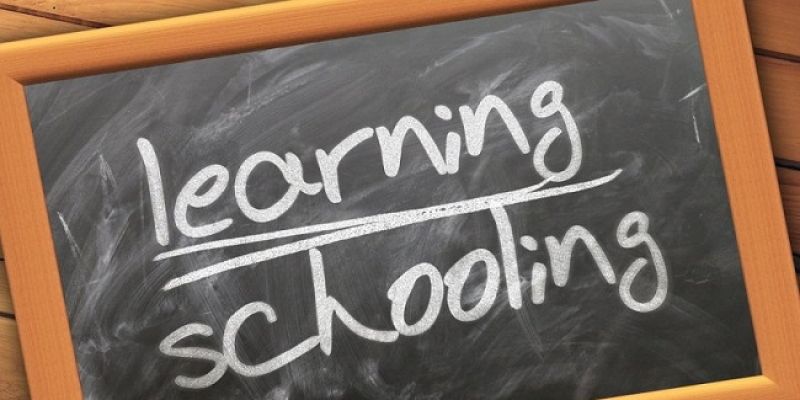What Is Peer Learning And Why It Is Important
- Views7492
- Comments 0
- College Tips
- AuthorRacheal M.

Benefits Of Peer Learning
Peer learning is an educational process where peers interact with other peers interested in the same topic. It is when we learn with and from each other. We can do this formally, informally, while we are face-to-face, or online. We can do it at the same time, or we can learn from each other asynchronously by leaving messages, comments, emails, or recordings back and forth between ourselves.
Peer learning is not a single, undifferentiated educational strategy. It encompasses a broad sweep of activities. Peer learning should be mutually beneficial and involve the sharing of knowledge, ideas and experience between the participants. It can be described as a way of moving beyond independent to interdependent or mutual learning. Students learn a great deal by explaining their ideas to others and by participating in activities in which they can learn from their peers. They develop skills in organizing and planning learning activities, working collaboratively with others, giving and receiving feedback and evaluating their own learning. Peer learning is becoming an increasingly important part of many courses, and it is being used in a variety of contexts and disciplines in many countries.
The potential of peer learning is starting to be realized, but examination of the ways in which it is used in existing courses suggests that practices are often introduced in an ad hoc way, without consideration of their implications. When such practices are used unsystematic-ally, students unfamiliar with this approach become confused about what they are supposed to be doing; they miss opportunities for learning altogether, and fail to develop the skills expected of them. Much peer learning occurs informally without staff involvement, and students who are already effective learners tend to benefit disproportionately when left to chance.
Formalized peer learning can help students learn effectively. At a time when university resources are stretched and demands upon staff are increasing, it offers students the opportunity to learn from each other. It gives them considerably more practice than traditional teaching and learning methods in taking responsibility for their own learning and, more generally, learning how to learn.
It is important to consider who the ‘peers’ in peer learning are. Generally, peers are other people in a similar situation to each other who do not have a role in that situation as teacher or expert practitioner. They may have considerable experience and expertise or they may have relatively little. They share the status as fellow learners and they are accepted as such. Most importantly, they do not have power over each other by virtue of their position or responsibilities.
Peer teaching, or peer tutoring, is a far more instrumental strategy in which advanced students, or those in later years, take on a limited instructional role. It often requires some form of credit or payment for the person acting as the teacher. Peer teaching is a well-established practice in many universities, whereas reciprocal peer learning is often considered incidental-a component of other more familiar strategies, such as the discussion group. Therefore, until recently, reciprocal peer learning has not been identified as a phenomenon in its own right that might be used to students' advantage.
Reciprocal peer learning typically involves students within a given class or cohort. This makes peer learning relatively easy to organize because there are fewer timetabling problems. There is also no need to pay or reward with credit the more experienced students responsible for peer teaching. Students in reciprocal peer learning are by definition peers, and so there is less confusion about roles compared with situations in which one of the 'peers' is a senior student, or is in an advanced class, or has special expertise.
Reciprocal peer learning emphasizes students simultaneously learning and contributing to other students' learning. Such communication is based on mutual experience and so they are better able to make equal contributions. It more closely approximates to Habermas' notion of an 'ideal speech act' in which issues of power and domination are less prominent than when one party has a designated 'teaching' role and thus takes on a particular kind of authority for the duration of the activity.
Peer learning is defined in its broadest sense, then, as 'students learning from and with each other in both formal and informal ways'. The emphasis is on the learning process, including the emotional support that learners offer each other, as much as the learning task itself. In peer teaching the roles of teacher and learner are fixed, whereas in peer learning they are either undefined or may shift during the course of the learning experience. Staff may be actively involved as group facilitators or they may simply initiate student-directed activities such as workshops or learning partnerships.
It is important to recognize that peer learning is not a single practice. It covers a wide range of different activities each of which can be combined with others in different ways to suit the needs of a particular course. It is as peer assessment in this regard and it is unfortunately similarly misunderstood as referring to a particular practice.
Benefits Of Peer Learning
- Students receive more time for individualized learning.
- Direct interaction between students promotes active learning.
- Peer teachers reinforce their own learning by instructing others.
- Students feel more comfortable and open when interacting with a peer.
- Peers and students share a similar discourse, allowing for greater understanding.
- Peer teaching is a financially efficient alternative to hiring more staff members.
- Teachers receive more time to focus on the next lesson.
